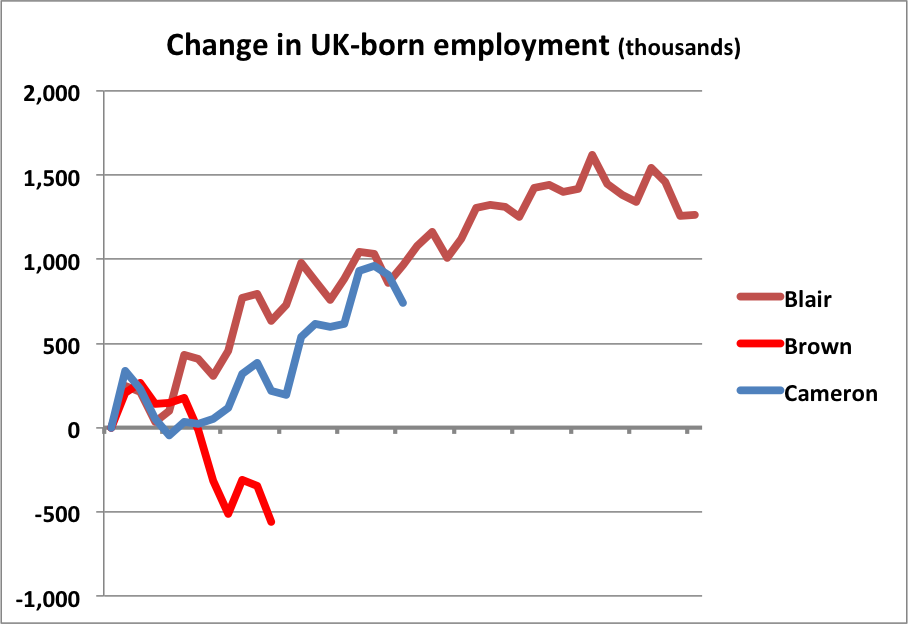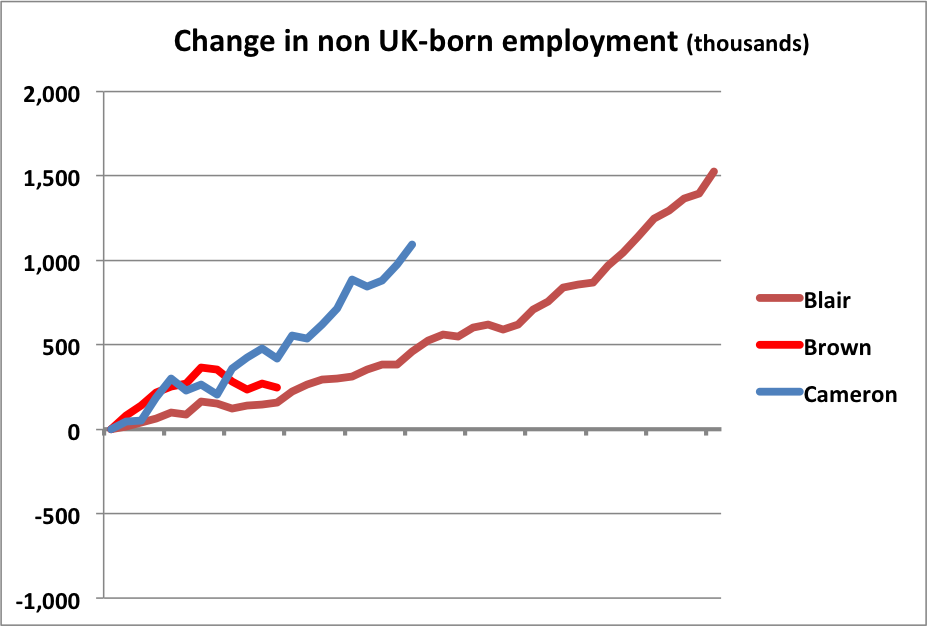Even more BBC repeats
A year or so ago Fraser Nelson wrote an interesting article for the Spectator here in which he provided a novel presentation of UK employment levels, comparing changes by Prime Minister under the headline Cameron the job-maker. He's regularly updated this, and this is the latest ...
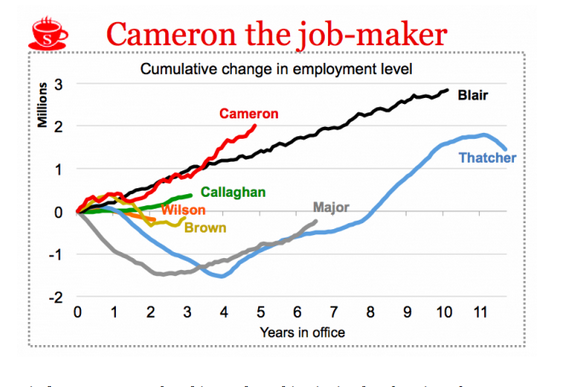
I previously looked at the impact of arrivals from abroad on the numbers for Blair, Brown and Cameron here on both levels and rates of employment and subsequently here.
As I went on to point out here, Fraser's chart did not distinguish one job from another, and so did not bring out the extent to which the relative proportions of full-time and part-time work had changed, or proportions of employee and self-employed. I concluded that the actual degree of success might become clearer over the next few quarters. While to be fair to Fraser he did address to some extent these issues in his own May update he didn't track these by Prime Minister in the same way as in his overall illustration. With another six months having passed since my last observations, here's another update from me ...
Data for the different types of jobs are from the latest monthly ONS labour market statistics published in September 2015 (which are seasonally adjusted), and for the UK/non-UK breakdown from the latest quarterly figures published in August 2015 (which are not seasonally adjusted).
The overall picture of changing employment levels by recent Prime Minister now looks like this. Note that the most recent movements do indeed show that overall employment has grown by more under Cameron than Blair had achieved by the same time into his premiership.
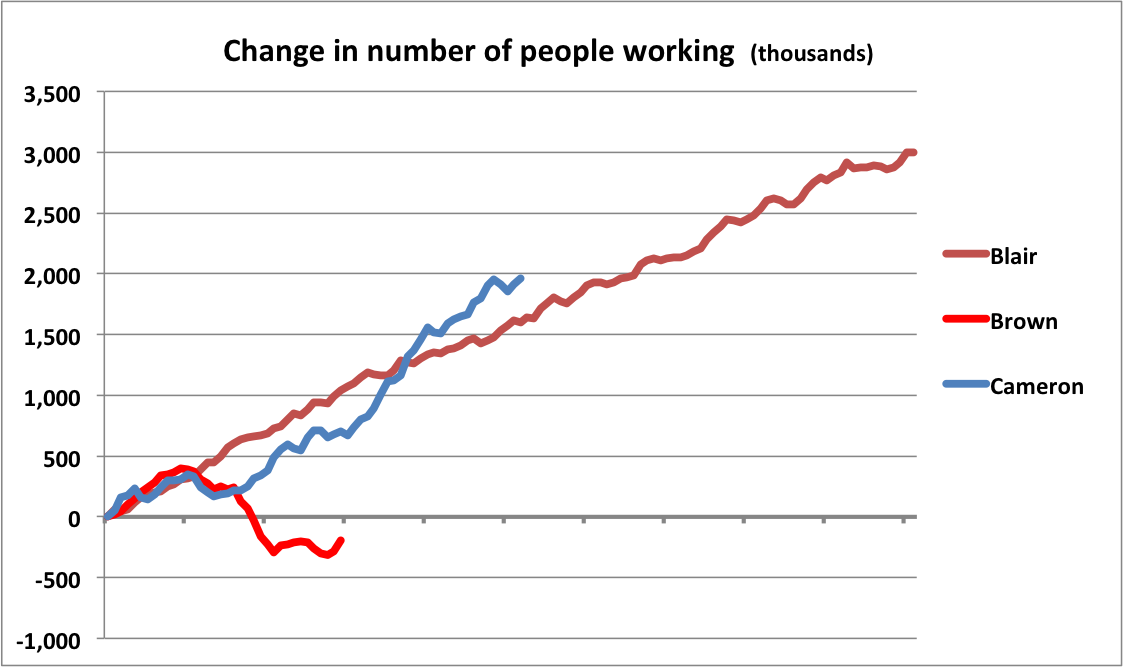
However, looking at full-time employees, Cameron hasn't quite outstripped Blair. This means of course that as a proportion of total growth, Cameron has overseen considerably less growth in full-time employee work.
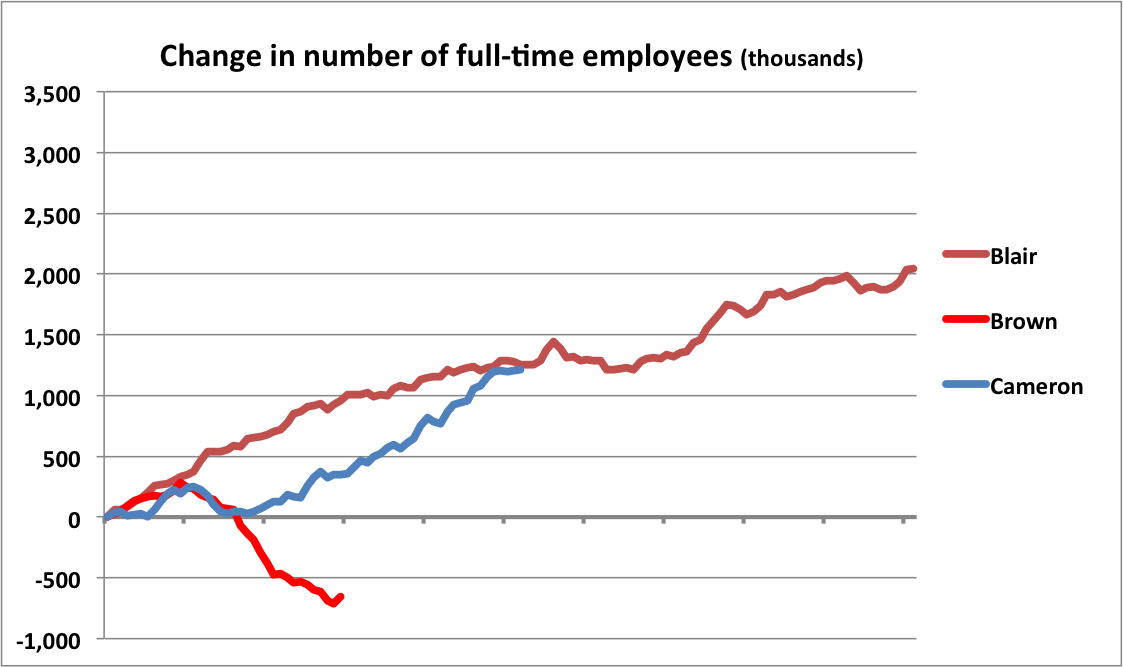
The next pictures are to a different scale from the one above, but all share the same scale for ease of comparison.
As noted in previous posts, under Blair employment growth comprised a large amount of part-time employment, about a third of total growth by number. In contrast, the numbers under Cameron had been barely significant, but in the past few months have begun to rise.
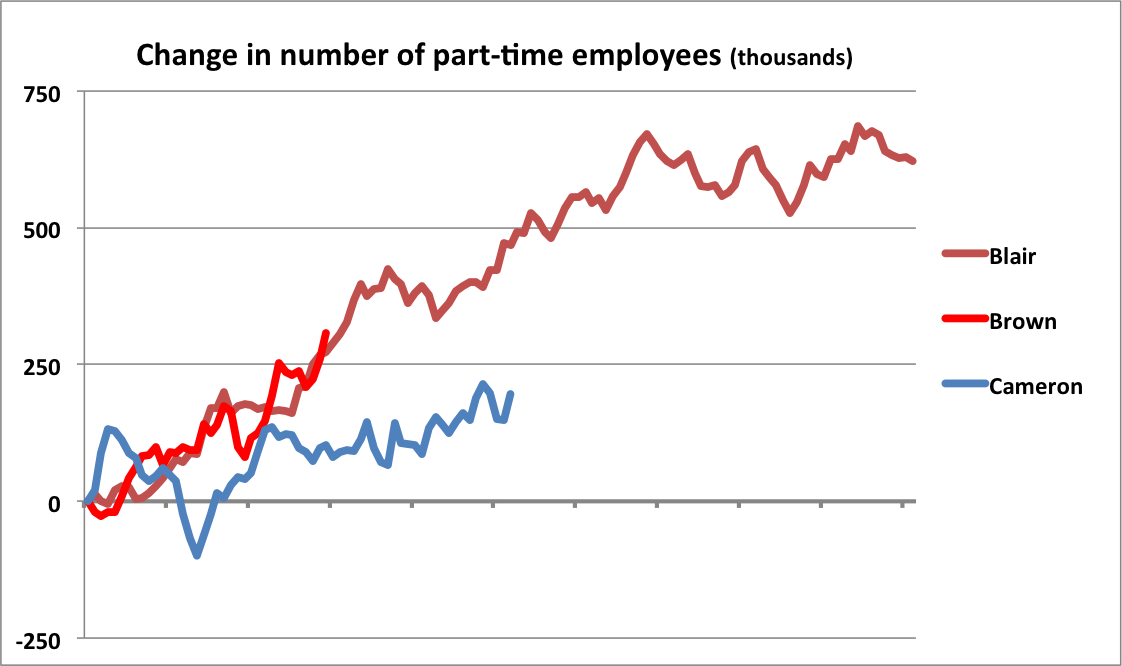
Turning to the self-employed, the contrast in the sudden upsurge in full-time self-employment under Cameron was marked. I've pointed out that the pace and magnitude of the change was not unprecedented - as is clear from the chart midway through the Blair years - but that previous change on this scale was not sustained and that forecasters might do well to be cautious before calling a structural change. In fact the past six months are showing a clear downward trend that suggests that Cameron might not in fact have grown full-time self-employment to a sustainably new plateau.
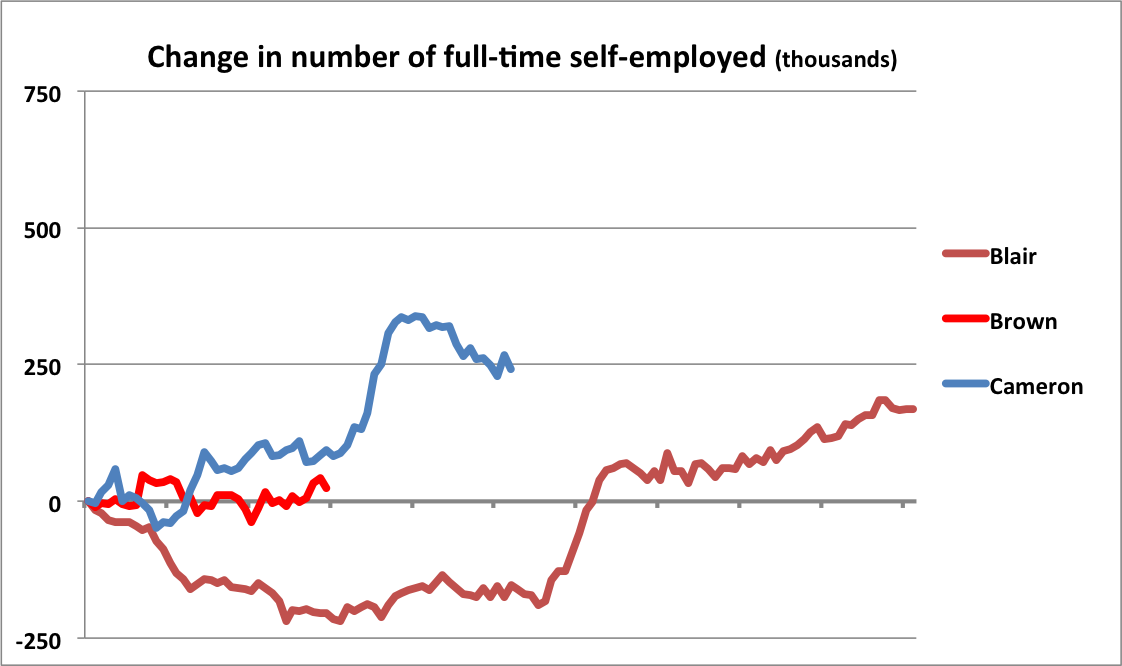
Increases in part-time self-employment had been greater and sharper than previously too, with an extra quarter of a million contributing a significant component of overall change under Cameron. The last six months suggest that this trend upwards - in contrast with full-time self-employment - might well be continuing.
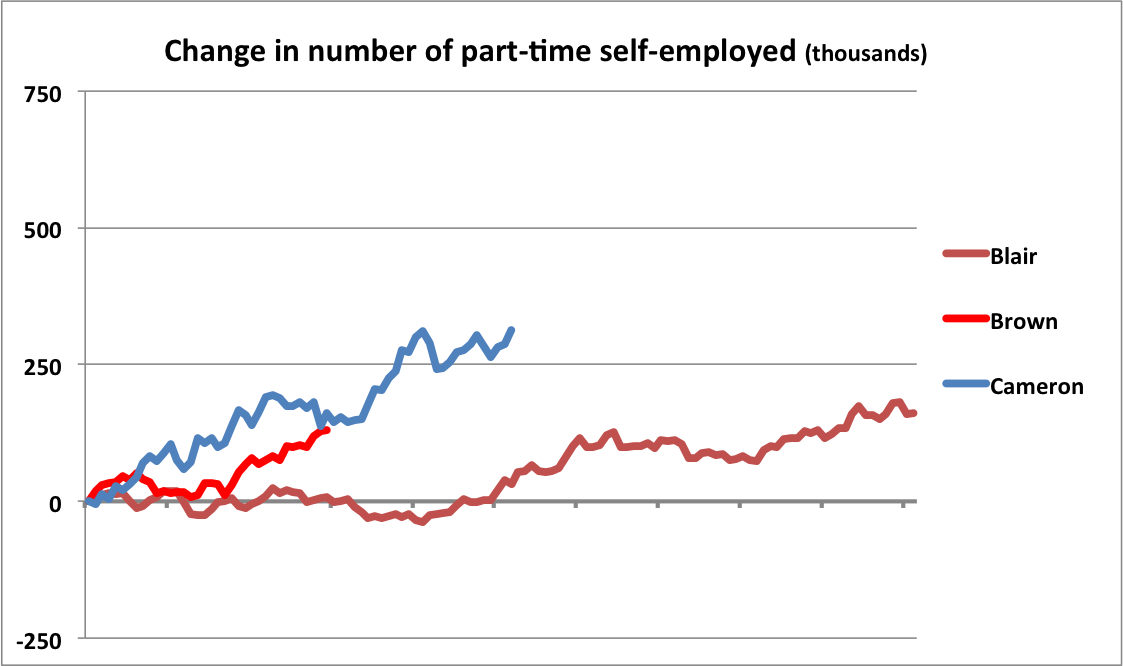
The quarterly update on employment by country of birth and nationality also lets us see the relative contribution to employment growth made by labour from abroad. The lines are more jagged because the figures are quarterly, and for the UK-born showing a regular seasonal pattern over time, the marked increases being associated with the Jul-Sep quarter when people leave education for employment at the end of the school/college/university year. The historical picture is that employment growth among the UK-born population under Blair tailed off in 2004, and UK-born employment levels were actually lower when he left office than they had been three years previously in early 2004. Over the whole period during which Blair was Prime Minister, employment levels of people born abroad increased more than employment levels among the UK-born population.
Under Cameron, after what appears to have been a brief recessionary hiccup employment growth among people born abroad consistently kept ahead of growth among the UK-born population until a year ago when the usual UK-born seasonal drop did not occur, enabling UK-born growth to catch up. However, over the last two quarters of the series UK-born employment has actually fallen, while employment of people born outside the UK has grown in both quarters. This means that the clear majority of the growth in employment under Cameron at the moment has resulted from growth in the numbers of people in employment who were born outside the UK. Though of course this could change again if there's a seasonal upsurge in the number of UK-born youngsters getting jobs after leaving school and university this summer ...
